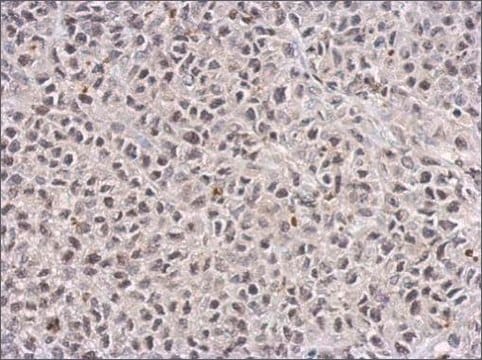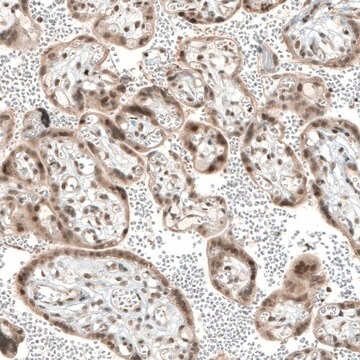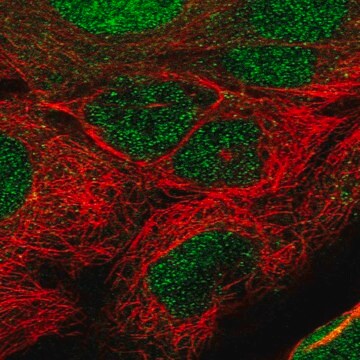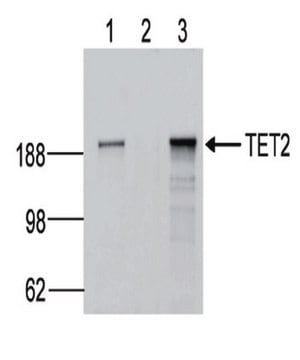MABE1144
Anti-TET1 Antibody, clone 5D6
clone 5D6, from rat
Synonim(y):
Methylcytosine dioxygenase TET1, CXXC-type zinc finger protein 6, Ten-eleven translocation 1 gene protein homolog
About This Item
Polecane produkty
pochodzenie biologiczne
rat
Poziom jakości
forma przeciwciała
purified immunoglobulin
rodzaj przeciwciała
primary antibodies
klon
5D6, monoclonal
reaktywność gatunkowa
mouse
metody
ELISA: suitable
immunocytochemistry: suitable
immunoprecipitation (IP): suitable
western blot: suitable
izotyp
IgG2aκ
numer dostępu NCBI
numer dostępu UniProt
docelowa modyfikacja potranslacyjna
unmodified
informacje o genach
mouse ... Tet1(52463)
Opis ogólny
Specyficzność
Immunogen
Zastosowanie
Epigenetics & Nuclear Function
Chromatin Biology
Immunoprecipitation Analysis: A representative lot immunoprecipitated endogenous TET1 from murine embryonic stem cell (mESC) lysate. Subsequent LC-MS/MS analysis detected the presence of co-immunoprecipitated glycosyltransferase OGT (Bauer, C., et al. (2015). J. Biol. Chem. 290(8):4801-4812).
ELISA Anaylsis: Clone 5D6 hybridoma culture supernatant was confirmed for its immunoreactivity against His-tagged murine TET1 by ELISA (Bauer, C., et al. (2015). J. Biol. Chem. 290(8):4801-4812).
Jakość
Immunocytochemistry Analysis: A 1:200 dilution of this antibody detected TET1 in mouse embryonic stem cells (ESCs).
Opis wartości docelowych
Powiązanie
Postać fizyczna
Przechowywanie i stabilność
Inne uwagi
Oświadczenie o zrzeczeniu się odpowiedzialności
Not finding the right product?
Try our Narzędzie selektora produktów.
Kod klasy składowania
12 - Non Combustible Liquids
Klasa zagrożenia wodnego (WGK)
WGK 1
Temperatura zapłonu (°F)
Not applicable
Temperatura zapłonu (°C)
Not applicable
Certyfikaty analizy (CoA)
Poszukaj Certyfikaty analizy (CoA), wpisując numer partii/serii produktów. Numery serii i partii można znaleźć na etykiecie produktu po słowach „seria” lub „partia”.
Masz już ten produkt?
Dokumenty związane z niedawno zakupionymi produktami zostały zamieszczone w Bibliotece dokumentów.
Nasz zespół naukowców ma doświadczenie we wszystkich obszarach badań, w tym w naukach przyrodniczych, materiałoznawstwie, syntezie chemicznej, chromatografii, analityce i wielu innych dziedzinach.
Skontaktuj się z zespołem ds. pomocy technicznej








